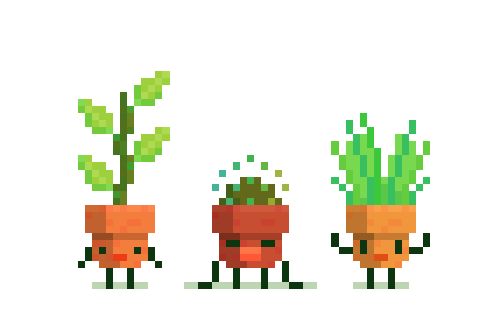this post was submitted on 20 Jun 2024
12 points (100.0% liked)
Houseplants
4666 readers
1 users here now
Welcome to /c/houseplants @ Mander.xyz!
In between life, we garden.

About
We're a warm and informative space for plant enthusiasts to connect, learn, and flourish together. Dive into discussions on care, propagation, and styling, while embracing eco-friendly practices. Join us in nurturing growth and finding serenity through the extraordinary world of houseplants.
Need an ID on your green friends? Check out: !plantid@mander.xyz
Get involved in Citizen Science: Add your photo here to help build a database of plants across the entire planet. This database is used by non-profits, academia, and the sciences to promote biodiversity, learning and rewilding.
Rules
- Don't throw mud. Be kind and remember the human.
- Keep it rooted (on topic).
- No spam.

Resources
Recommendations
Health
Identification
- PlantNet.org (see also: !plantid@mander.xyz)
- Seek from iNaturalist
Light Information
- GrowLightMeter
- PlantLightDB
- HouseplantJournal (Scroll down.)
Databases
- Catalogue of Life
- Perenual.com
- The Garden.org Plants Database
- Useful Tropical Plants (Interactive Database Version)
- WorldFloraOnline
- USA-NPN
- Tom Clothier's Garden Walk and Talk
- Plants for a Future
- USDA Datasets
- Permapeople.org
- Temperature Climate Permaculture: Plant Index
- Natural Capital Plant Database
- Colorado Plant Database
- SEINet
- North American Ethnobotany Database
- BCSS Field No. Lookup (collection site IDs for cacti and succulents)
- U Michigan Native Plant Database for Michigan by Region
FOSS Tools
- Common House Plants API
- HappyPlants (Monitoring App)
- PlantGeek (Care Info App)
Similar Communities
DM us to add yours! :)
General
Gardening
- !balconygardening@slrpnk.net
- !gardening@mander.xyz
- !nativeplantgardening@mander.xyz
- !gardening@lemmy.ml
- !gardening@midwest.social
- !permaculture@lemmy.world
- !tropical_plants@mander.xyz
Species
Regional
Science
Sister Communities
Science and Research
Biology and Life Sciences
- !anthropology@mander.xyz
- !biodiversity@mander.xyz
- !palaeoecology@mander.xyz
- !palaeontology@mander.xyz
Plants & Gardening
Physical Sciences
Humanities and Social Sciences
Memes

founded 2 years ago
MODERATORS
you are viewing a single comment's thread
view the rest of the comments
view the rest of the comments




The bottle is a carbon dioxide tank. It is connected to a regulator that can open/close the valve to let CO2 out. During the day it brings the CO2 level under the leaves to around 800 - 1000 parts per million (ppm). Usually the level in the air is closer to 400 - 500 ppm, and fast growing plants can grow faster with some extra CO2 in the air to build into sugars during photosynthesis. At least in theory... For me it is an experiment in CO2 regulation as I have measured and decreased CO2 levels in the past (when growing mushrooms and tempeh) but I had never actively delivered it, so I thought this would be a good opportunity to learn.
It turns out pumpkin flowers are very fragrant, and the odor is very pleasant, but I am not good at describing smells with words, sorry... To me it smells like a mixture of a rhododendron flower and a pumpkin. I recently went to a wedding in which they served ricotta stuffed zuccini flowers (very similar flowers) and the cook clearly knew what she was doing, in that case the zuccini flowers still had some of the fragrance and this made the dish taste very special. In my attempt I filled the flowers with some curry rice and then pan-seared them in butter, and all the fragrance went away in the process. So the flower was just a vessel with the soft texture of a petal and the taste of browned butter. I did not succeed in keeping any flower flavor. It was a quick-and-dirty experiment... I would like to learn more about cooking with flowers while keeping some flavor.
This dude’s the Tony Stark of pumpkin growing